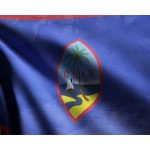Has the thought of moving to a tropical country with sandy beaches and warm waters been on your mind?
If the hurricane season doesn’t scare you, you’ll be happy to know the cost of living in Puerto Rico is 14.2% lower than in the USA.
During the past couple of years, because of the situation worldwide, working remotely became something many people chose to do.
Puerto Rico has low wages, but if you work remotely, or if you consider this to be your retirement destination, you will have a more than comfortable life with $2000/month.
A smaller budget won’t be much of a hassle either, but let’s look at all the factors that will determine the monthly spending of one person.
Cost of Living in Puerto Rico
The average cost of living per month for one person in Puerto Rico can vary depending on factors such as location, lifestyle, and individual spending habits.
However, a rough estimate of a basic monthly budget for a single person in Puerto Rico might range from $1,500 to $2,500 USD.
This budget includes expenses like rent, utilities, groceries, transportation, dining out occasionally, healthcare, and miscellaneous costs.
Keep in mind that Puerto Rico offers a range of living options, from more affordable rural areas to higher-cost urban centers, so the actual cost of living can differ significantly based on where you choose to reside.
Additionally, personal choices and spending habits can impact your monthly expenses. It’s advisable to create a detailed budget tailored to your specific circumstances for a more accurate estimate.
| Expense Category | Average Monthly Cost (USD) | Additional Information |
|---|---|---|
| Housing (Apartment Rent) | $700 – $1,500 | Cost varies by location and size of the apartment. |
| Utilities (Electricity, Water, Gas) | $100 – $200 | Costs can fluctuate based on usage and location. |
| Groceries | $250 – $400 | Prices vary based on shopping habits and dietary choices. |
| Transportation (Gasoline) | $50 – $100 | Costs depend on the frequency of use and vehicle type. |
| Public Transportation | $20 – $60 | Bus and metro fares for regular commuting. |
| Dining Out (Per Meal) | $10 – $30 | Costs can vary from inexpensive to upscale dining. |
| Healthcare (Basic Services) | $50 – $150 | Basic healthcare expenses, excluding insurance. |
| Internet & Mobile Phone | $50 – $100 | Costs can vary based on internet speed and phone plan. |
| Entertainment & Leisure | $50 – $200 | Expenses for activities, dining, and entertainment. |
| Education (if applicable) | Varies | Tuition costs depend on the level of education. |
| Miscellaneous | $50 – $100 | May include personal items and unexpected expenses. |
Living in Puerto Rico Credible Reliable Sources
Living in Puerto Rico can be a unique and rewarding experience, but it’s important to gather information from credible and reliable sources before making the move. Here are some sources and platforms where you can find valuable information about living in Puerto Rico:
| Source | Description |
|---|---|
| Government Websites | Official website of the Government of Puerto Rico (https://www.pr.gov/) for residency and government service information. |
| Tourism Websites | Discover Puerto Rico (https://www.discoverpuertorico.com/) offers insights into culture, attractions, and lifestyle. |
| Expat Communities | Online forums and Facebook groups for expats in Puerto Rico provide firsthand experiences and advice. |
| Relocation Guides | Expat Exchange (https://www.expatexchange.com/) and InterNations (https://www.internations.org/) feature guides and forums on expat life in Puerto Rico. |
| Local News Outlets | Stay informed about current events and local issues by reading El Nuevo Día (https://www.elnuevodia.com/) and other local news websites. |
| Real Estate Websites | Zillow (https://www.zillow.com/) and local Puerto Rican real estate agencies provide housing market insights. |
| Tax and Financial Advisers | Consult with professionals who specialize in Puerto Rican tax incentives and financial planning. |
| Legal Experts | Immigration and legal experts can provide guidance on Puerto Rican laws and regulations. |
| Local Expat Blogs and Vlogs | Explore blogs and YouTube channels of expats sharing their experiences and tips. |
| Books and Publications | Look for books and publications on Puerto Rican culture, history, and lifestyle. |
| Credible News Outlets | Trusted news sources offer updates on Puerto Rico’s economy, politics, and developments. |
Monthly Cost of Living in Puerto Rico
The monthly cost of living in Puerto Rico can vary widely depending on your lifestyle, location, and individual choices. However, here’s a rough estimate of the average monthly cost of living for a single person in Puerto Rico:
- Housing (Apartment Rent): $700 – $1,500 (varies based on location and size)
- Utilities (Electricity, Water, Gas): $100 – $200
- Groceries: $250 – $400
- Transportation (Gasoline): $50 – $100
- Public Transportation: $20 – $60 (bus and metro)
- Dining Out (Per Meal): $10 – $30
- Healthcare (Basic Services): $50 – $150
- Internet & Mobile Phone: $50 – $100
- Entertainment & Leisure: $50 – $200
- Education (if applicable): Varies (depends on school and level)
- Miscellaneous: $50 – $100
This rough estimate results in a total monthly cost ranging from approximately $1,280 to $2,640 for a single person. Keep in mind that these are average costs, and your actual expenses may be higher or lower depending on your choices and location within Puerto Rico.
For a more accurate estimate, it’s advisable to create a detailed budget based on your specific circumstances and preferences. Additionally, costs can vary between urban and rural areas, so your choice of location will also impact your monthly expenses.
Cost of Transportation in Puerto Rico
Locals and tourists mostly rely on buses when it comes to public transportation. A one trip ticket cost around $1.50, which is 33% less than most areas in the US.
Gas tends to be a bit more expensive, usually staying about 40 cents higher than in the US.
If you are in a rush and want to hop in a taxi, the price/mile is close to the same as in the US, at $2.40, however, you’ll only really find taxis in the zones that are popular as tourist destinations.
Cost of Food in Puerto Rico
When it comes to groceries and household items the prices differ. Milk is double the price than in the US, but for the most part prices are not drastically higher.
Imported goods are more expensive, so buying local brands will significantly reduce your grocery bill.
Overall, your groceries might end up being higher than in the States, but reported to the cost of living you will save money from other expenses.
The price for dining out in Puerto Rico is lower than in the US, which is great considering that is unavoidable in such a beautiful location.
Cost of Utilities in Puerto Rico
Utilities tend to be on the higher side, about 20% compared to the US.
The average $150 for electricity, water, and garbage, combined with $60 for internet will depend on how much you use the AC, and how fast of an internet connection you prefer.
Cost of Education in Puerto Rico
If you have children, the education system in Puerto Rico is well-structured. The only downside is that Spanish is the main language, but English is widely taught as well.
Even the public school system is excellent and with a high literacy rate, residents have the option to enroll their children in private school, which does cost a pretty penny.
The cost of education in Puerto Rico can vary widely depending on the level of education (e.g., elementary, secondary, higher education), the type of institution, and whether the school is public or private. Here’s an overview of the approximate costs associated with education in Puerto Rico:
- Public Primary and Secondary Education:
- Public primary and secondary education in Puerto Rico is free for residents.
- However, parents may need to cover expenses such as school supplies, uniforms, and transportation.
- Private Primary and Secondary Education:
- Private schools in Puerto Rico can vary in cost, with tuition fees ranging from approximately $2,000 to $8,000 or more per year, depending on the school’s reputation and location.
- Additional expenses may include uniforms, textbooks, and extracurricular activities.
- Higher Education (Universities and Colleges):
- Puerto Rico is home to a variety of public and private universities and colleges.
- Public university tuition fees for in-state residents are generally more affordable than private institutions. Annual tuition at public universities can range from around $2,000 to $4,000 for residents.
- Private university tuition fees can vary widely, with annual costs ranging from approximately $6,000 to $12,000 or more.
- Additional costs may include textbooks, housing, and transportation.
- Financial Aid and Scholarships:
- Financial aid programs and scholarships are available for Puerto Rican students pursuing higher education.
- Students may be eligible for federal financial aid programs, grants, and scholarships offered by universities, private organizations, and the Puerto Rican government.
- Language of Instruction:
- Most primary and secondary education in Puerto Rico is conducted in Spanish.
- Higher education institutions may offer courses in both Spanish and English, particularly at the undergraduate and graduate levels.
Cost of Healthcare in Puerto Rico
The cost of healthcare in Puerto Rico can vary based on factors such as the type of healthcare services you require, your health insurance coverage, and whether you choose public or private healthcare providers. Here are some general insights into healthcare costs in Puerto Rico:
- Doctor’s Visit (General Practitioner):
- Without Insurance: $60 – $120 per visit
- With Insurance: Co-pays can range from $10 to $40 per visit
- Dental Check-Up:
- Without Insurance: $60 – $150 for a basic check-up
- With Insurance: Co-pays can range from $10 to $50 for preventive care
- Prescription Medications:
- Prices for prescription drugs can vary widely. Some common medications may have lower prices compared to the mainland United States, while others may be similar in cost.
- Generic medications are generally more affordable than brand-name drugs.
- Hospitalization:
- Costs for hospital stays can vary significantly based on the type of treatment required and the length of stay.
- A one-night hospital stay can range from $1,500 to $3,000 or more.
- Health Insurance Premiums:
- Health insurance premiums can vary based on your age, coverage level, and the insurance provider.
- Monthly premiums can range from $200 to $500 or more.
- Emergency Room Visit:
- Without Insurance: $500 – $1,500 or more, depending on the services provided
- With Insurance: Co-pays can vary, typically ranging from $100 to $300 or more
- Specialist Consultation:
- Without Insurance: $100 – $250 per visit or more, depending on the specialty
- With Insurance: Co-pays can vary, typically ranging from $20 to $60 or more
- Medical Tests and Imaging:
- Costs for tests and imaging (e.g., X-rays, blood tests, MRI) can vary widely. Prices may range from $50 to $500 or more, depending on the test and where it’s performed.
Cost of Rent in Puerto Rico
Renting or buying a home is one of the main reasons why Puerto Rico is more affordable than the US, with a significant 40%-50% lower price on housing. A 1-bedroom apartment ranges from $450 to $700, depending on its proximity to a city or to a popular tourist destination. US citizens can freely buy a home in Puerto Rico, and don’t need a visa or a passport to travel.
You can find small apartments all over Puerto Rico for $45.000-$50.000, but with a bit of digging, you might find even cheaper ones. Houses start at around $65.000 in Jayuya, but you can find very affordable ones even in San Juan. The average property price is $135/sq ft.
Monthly Cost of Rent in Puerto Rico
The monthly cost of rent in Puerto Rico can vary widely based on several factors, including the location within the island, the type of housing, and whether the rental is in a rural or urban area. Here are some approximate rent ranges for different types of accommodations:
| Type of Accommodation | Average Monthly Rent Range (USD) |
|---|---|
| Studio/One-Bedroom Apartment | $400 – $1,000+ |
| Two-Bedroom Apartment | $700 – $1,500+ |
| Three-Bedroom Apartment | $1,000 – $2,000+ |
| Small House (Rural Area) | $500 – $1,000+ |
| Larger House (Urban/Upcale) | $1,200 – $3,000+ |
| Condominium | $800 – $2,500+ |
| Shared Accommodations | $300 – $800+ |
| Short-Term Rentals (Vacation) | Varies (daily/weekly rates) |
Where to Stay in Puerto Rico: Best Neighborhoods
San Juan
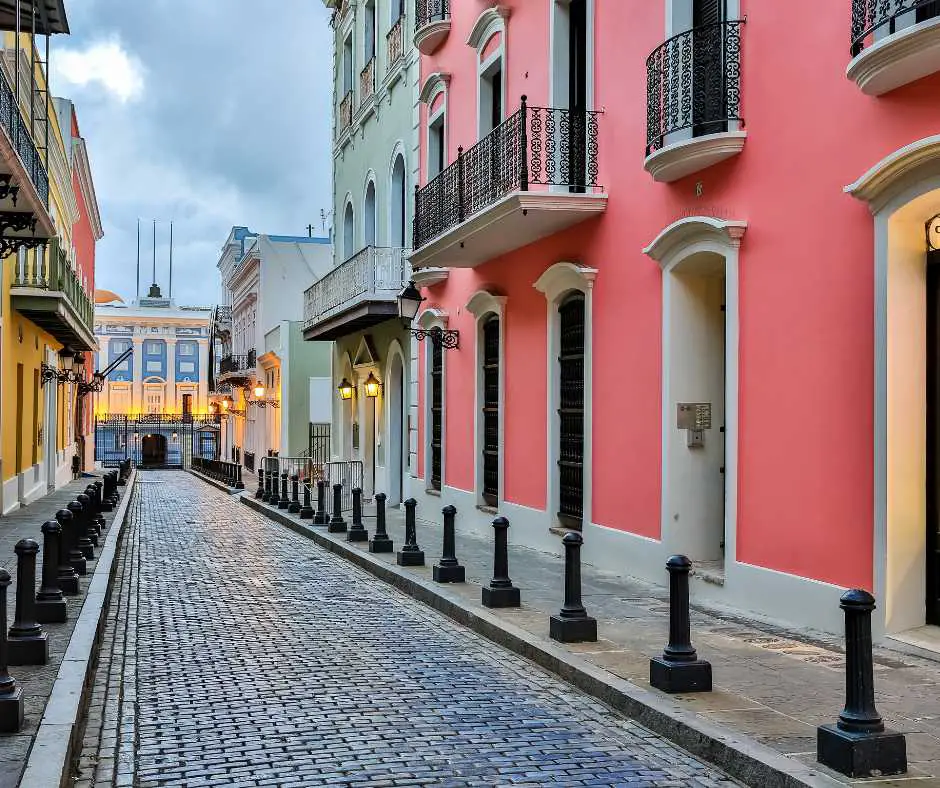
- Old San Juan: Experience historic charm with colorful buildings, cobblestone streets, and cultural attractions.
- Condado: A trendy area with luxury resorts, high-end shopping, and beautiful beaches.
- Isla Verde: Known for its pristine beaches, vibrant nightlife, and proximity to the airport.
- Santurce: An artsy neighborhood with galleries, street art, and cultural events.
Rincon
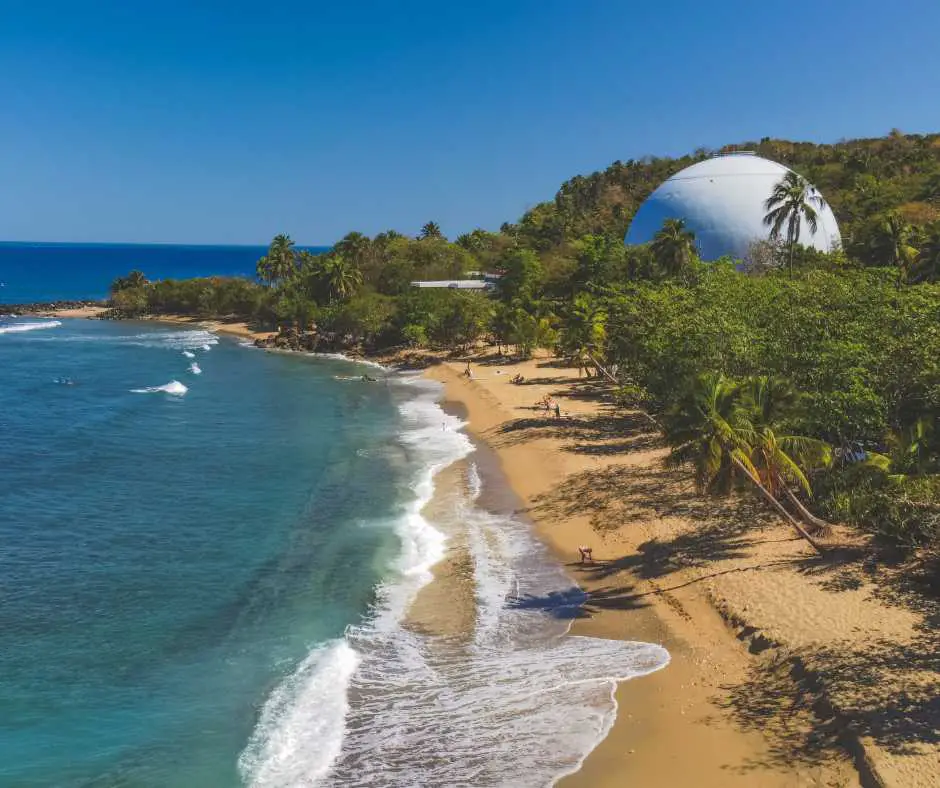
Rincón, located on the western tip of Puerto Rico, is a picturesque coastal town that beckons visitors with its relaxed vibe, world-class surfing conditions, and captivating sunsets. Known as the “Surfing Capital of the Caribbean,” Rincón is a haven for surf enthusiasts from around the globe.
Its diverse surf breaks, including Domes Beach, Tres Palmas, and Sandy Beach, cater to surfers of all skill levels, making it an ideal destination for those looking to ride the waves or learn the art of surfing.
In addition to its reputation as a surfing paradise, Rincón boasts an array of beautiful beaches that offer more than just thrilling waves. Sandy Beach, a favorite among both surfers and beachgoers, invites sunbathers and swimmers to relax on its golden sands.
Visitors can also explore other nearby coastal gems such as Steps Beach and Corcega Beach, each offering its unique charm and opportunities for beachcombing and aquatic adventures.
Rincón’s allure extends beyond its shores, as the town exudes a laid-back atmosphere that invites visitors to embrace the “island time” lifestyle. Here, the pace of life is unhurried, making it the perfect destination for those seeking respite from the frenetic pace of urban living.
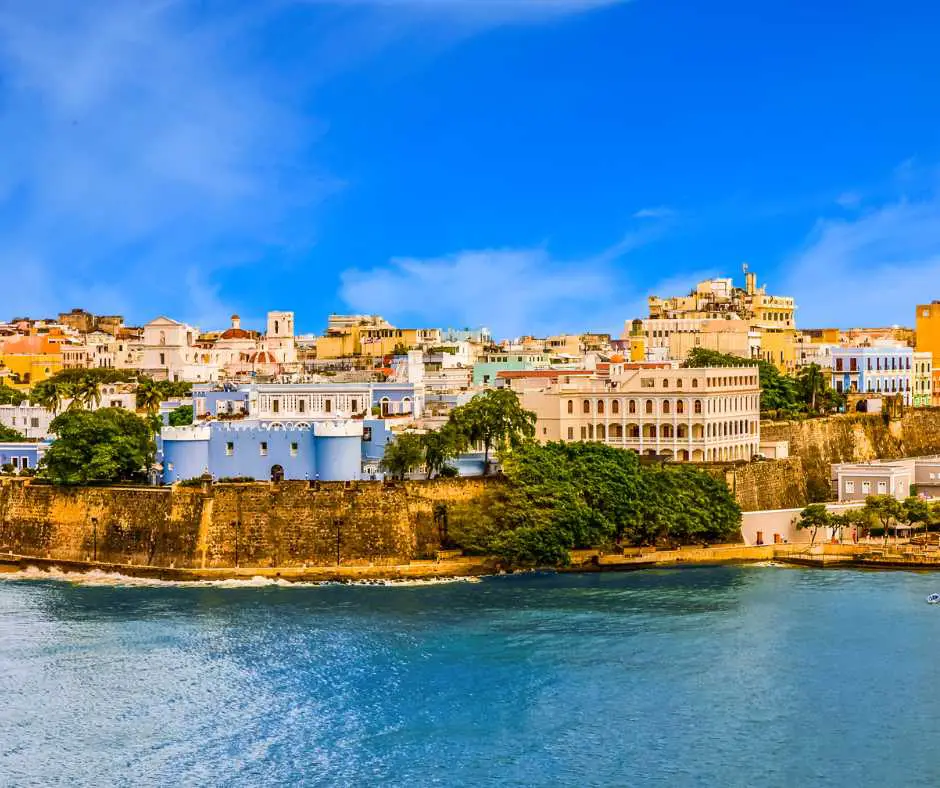
The surrounding natural beauty of Rincón further enhances its appeal. Hiking trails in nearby reserves, such as the Tres Palmas Marine Reserve and Punta Higuero Wildlife Refuge, offer opportunities for eco-tourism and exploration. Birdwatchers and snorkeling enthusiasts will find plenty to appreciate in these protected areas, where lush flora and diverse fauna flourish.
Culinary enthusiasts will find satisfaction in Rincón’s evolving food scene. Local restaurants and food trucks offer an array of dining options, from fresh seafood and traditional Puerto Rican dishes to international cuisine. Exploring the local flavors is an essential part of the Rincón experience.
Rincón’s cultural landscape is equally vibrant, with a thriving arts community showcased in local galleries and cultural events. Festivals celebrating the town’s creativity and cultural diversity add to the area’s charm and offer visitors a chance to immerse themselves in the local art and music scene.
The welcoming and inclusive community of Rincón, which attracts a diverse group of residents and expats, contributes to its unique appeal. The town is known for its friendly and open-minded atmosphere, making it a popular destination for those looking to establish roots on the island.
While Rincón offers a tranquil and remote ambiance, it remains relatively accessible, with a 2.5-hour drive to San Juan and the convenience of Rafael Hernández Airport in Aguadilla nearby.
Luquillo
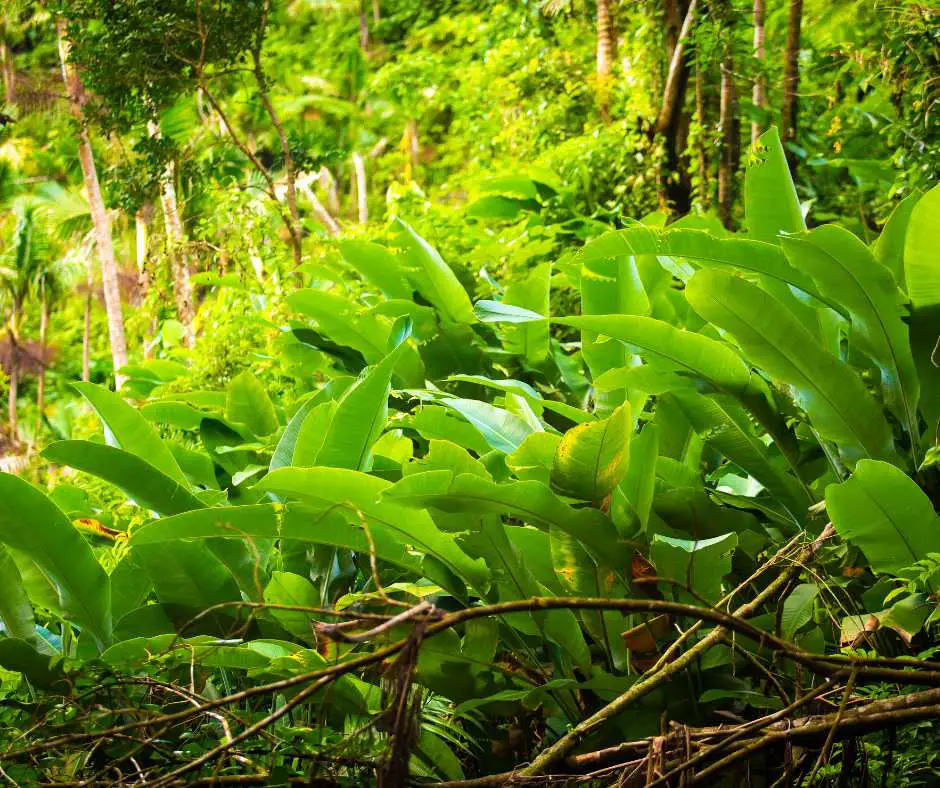
Luquillo, situated on the northeastern coast of Puerto Rico, is a tropical paradise known for its stunning beaches, lush rainforests, and vibrant local culture. One of its most famous attractions is Luquillo Beach, often referred to as “La Monserrate.”
This pristine beach, with its golden sands and crystal-clear turquoise waters, is a beloved destination for both locals and tourists. Families especially appreciate its calm and shallow waters, making it perfect for swimming and picnicking by the shore.
Luquillo’s close proximity to the El Yunque National Forest adds to its allure. The town serves as a gateway to this lush rainforest, allowing visitors to explore its hiking trails, swim beneath cascading waterfalls, and immerse themselves in the vibrant flora and fauna of the region.
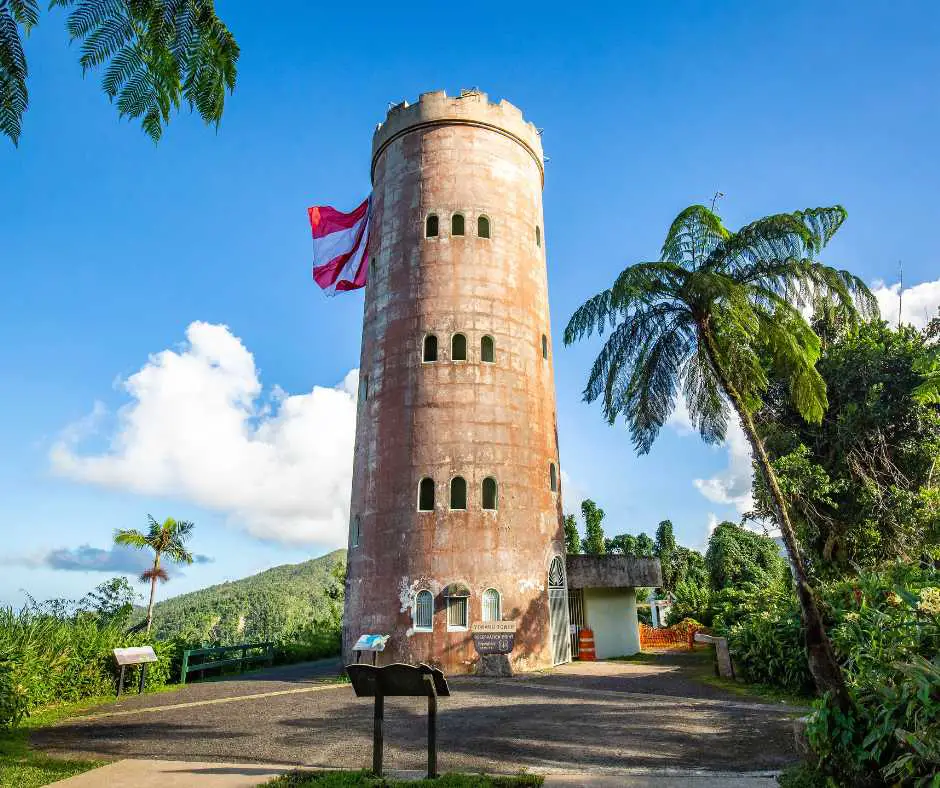
Food enthusiasts will delight in the “Kioskos de Luquillo,” a famous row of open-air food stalls offering a delectable array of Puerto Rican street food. From fresh seafood and mofongo to empanadillas and tropical fruit drinks, these kiosks provide a delightful culinary experience, allowing visitors to savor the island’s flavors.
For those seeking adventure, “Las Paylas” is a natural wonder not to be missed. These natural waterslides and pools, carved into the rocky riverbed of the Mameyes River, provide an exhilarating and refreshing escape within the heart of nature.
Luquillo’s town center is a vibrant hub of local culture and commerce. Wandering through its colorful streets, visitors can explore local markets, interact with friendly residents, and partake in cultural festivals and events that showcase Puerto Rican music, dance, and art.
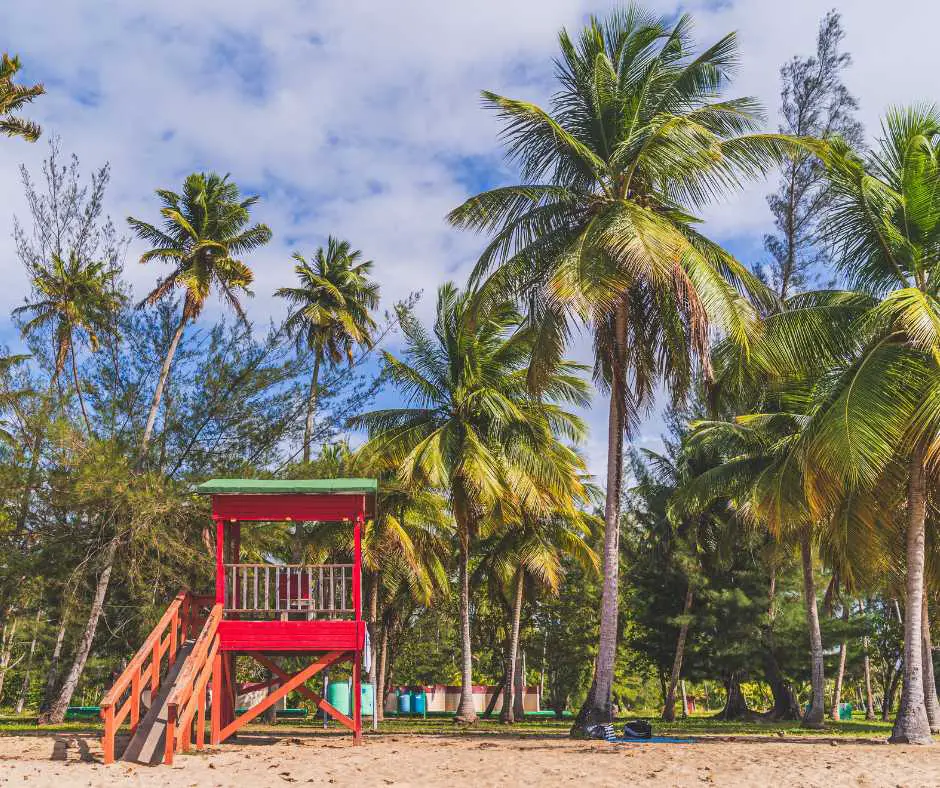
The Balneario de Luquillo, or Luquillo Public Beach, is a family-friendly destination that offers lifeguard-supervised swimming areas, picnic facilities, and changing rooms. It’s the ideal spot for a safe and enjoyable beach experience for visitors of all ages.
Luquillo’s coastline is adorned with several beautiful beaches, each with its unique charm. Playa Azul is a favorite for snorkeling, allowing visitors to explore the colorful underwater world, while Playa Fortuna is known for its strong waves, making it an excellent choice for water sports enthusiasts.
Located approximately 30 minutes from San Juan, Luquillo is easily accessible by car, making it a convenient destination for day trips or extended stays. The nearby Luis Muñoz Marín International Airport provides straightforward access for travelers arriving by air.
Ponce
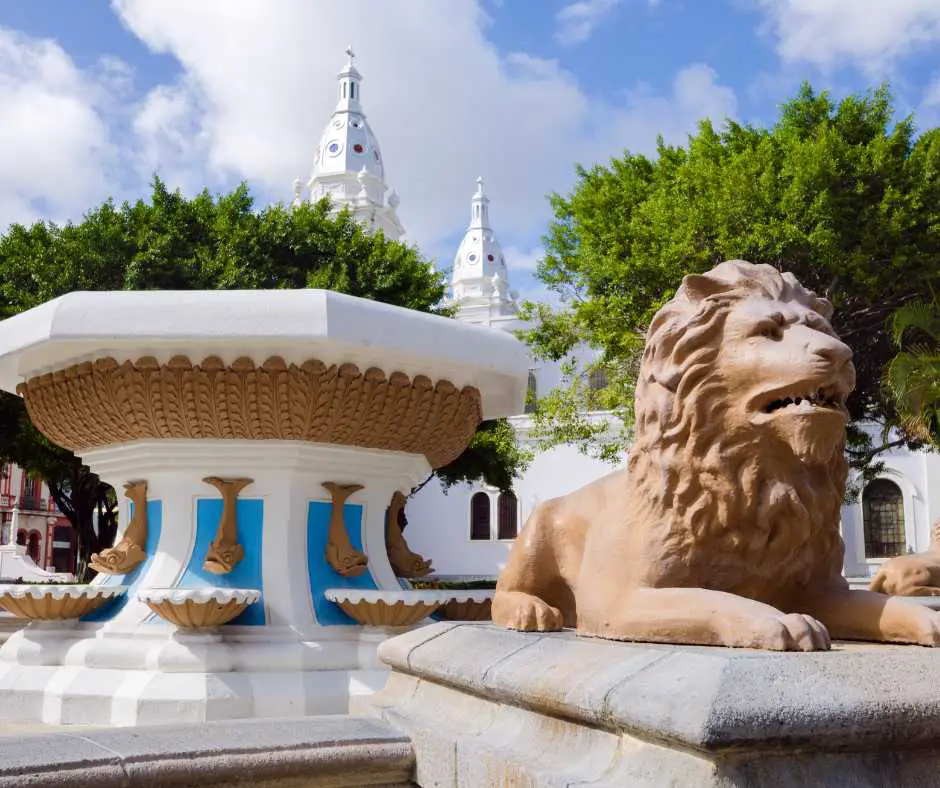
Ponce is celebrated for its rich history and architectural beauty. The city boasts a wealth of well-preserved historic buildings, including neoclassical mansions, colonial-era churches, and colorful townhouses that line the streets of its historic district. Strolling through the city is like stepping back in time, with the historic architecture providing a picturesque backdrop for exploration.
One of the city’s most iconic landmarks is the Ponce Cathedral, officially known as the Cathedral of Our Lady of Guadalupe. This stunning neoclassical structure dates back to the 17th century and is an important cultural and religious site in Ponce. Visitors can explore its elegant interior and admire its intricate architecture.
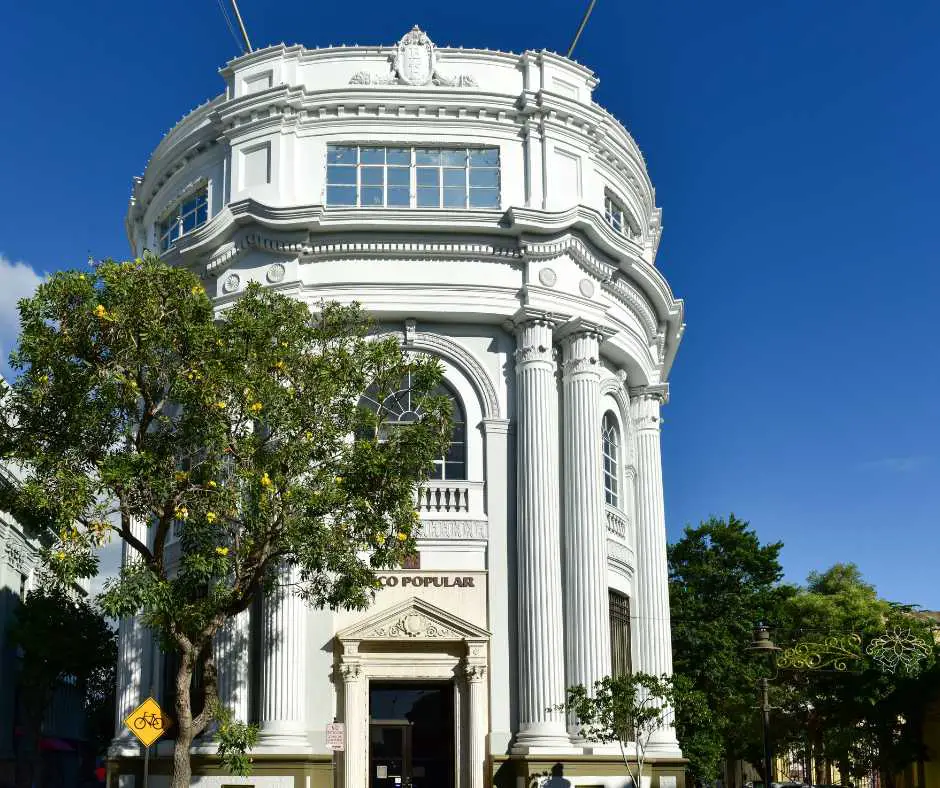
Ponce is not only steeped in history but also in culture. The city is known for its vibrant arts scene, with numerous museums and galleries showcasing Puerto Rican art and history. The Ponce Museum of Art, with its impressive collection of European and Latin American art, is a must-visit for art enthusiasts.
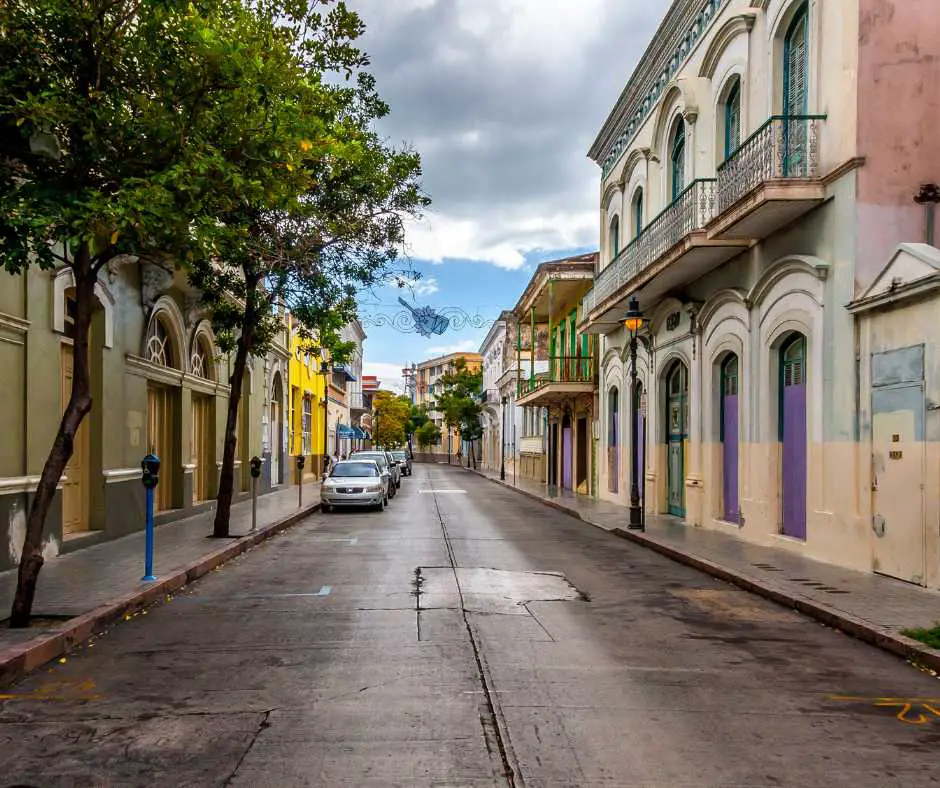
The city’s culture comes alive through its festivals and events. Ponce is famous for its lively Carnival celebrations, which are among the most vibrant and colorful in the Caribbean. The annual Ponce Jazz Festival and the Festival Nacional de la Danza showcase the city’s musical and dance traditions.
Nature lovers will find much to appreciate in Ponce as well. The city is surrounded by natural beauty, with nearby attractions like the Toro Negro State Forest and the Guánica Dry Forest Reserve offering hiking trails, birdwatching opportunities, and a chance to connect with Puerto Rico’s diverse ecosystems.
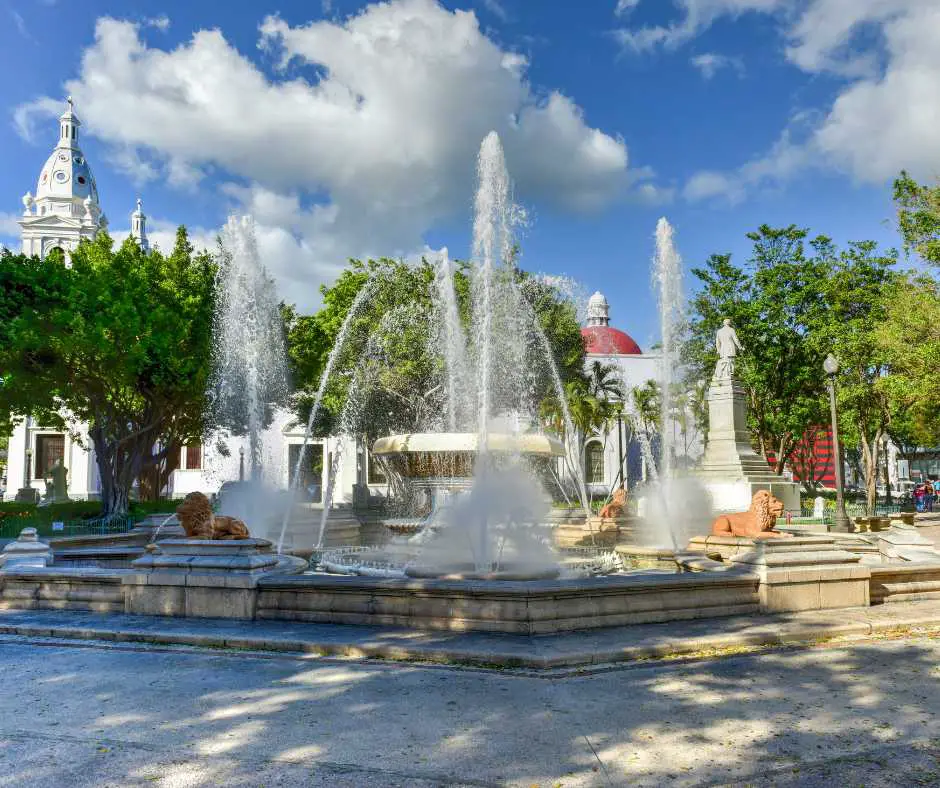
Ponce’s gastronomy is a reflection of Puerto Rico’s culinary traditions. The city is known for its delectable local dishes, including mofongo, alcapurrias, and fresh seafood. The local markets and food stalls are great places to sample authentic Puerto Rican cuisine.
Accessibility to Ponce is facilitated by Mercedita Airport, which serves the city and the southern region of Puerto Rico. The city’s strategic location makes it a gateway to exploring other parts of the island, from the central mountains to the coastal towns.
Pros and Cons of Living in Puerto Rico
| Pros of Living in Puerto Rico | Cons of Living in Puerto Rico |
|---|---|
| Tropical Climate: Enjoy warm weather year-round. | High Utility Costs: Electricity and water bills can be relatively high. |
| Natural Beauty: Experience stunning beaches, rainforests, and scenic landscapes. | Limited Job Opportunities: Job availability and salaries may be lower than in the mainland U.S. |
| Cultural Diversity: Embrace a rich blend of cultures and traditions. | Bureaucracy: Dealing with government paperwork can be challenging. |
| Tax Incentives: Some residents benefit from favorable tax incentives. | Hurricane Risk: Puerto Rico is susceptible to hurricanes and tropical storms. |
| Affordable Healthcare: Access to affordable healthcare services. | Infrastructure Challenges: Some areas may have unreliable utilities and road conditions. |
| Beaches and Outdoor Activities: Abundant opportunities for outdoor recreation. | Language Barrier: While many speak English, Spanish is the primary language. |
| Cultural Events: Enjoy festivals, music, and art events year-round. | Education System: Quality of public education can vary. |
| Affordable Housing: Rental and housing costs are often reasonable. | Economic Challenges: The island has faced economic struggles in recent years. |
| Diverse Cuisine: Savor a wide range of delicious foods and cuisine. | Island Fever: Some may experience a sense of isolation due to the island’s remoteness. |
| U.S. Territory: Puerto Rico uses the U.S. dollar and is governed by U.S. laws. | Utility Reliability: Occasional power outages and water shortages may occur. |
Unfortunately, there are some not so pleasant aspects of living in the archipelago. Probably the worst one is the medical system.
The hospitals are well-equipped, and the doctors know what they’re doing, just like in the US, but there is no way to get state health insurance in Puerto Rico.
Despite it being a commonwealth of the US, there’s no Affordable Care Act. The only way to have health insurance is by purchasing a private one, but these tend to cost less than health insurance in the US.
Another thing about the healthcare system is the way you have to handle your appointment. Actually, there are no appointments. If you want to see a doctor, you’ll have to have your name put on a list in the morning, and visit the doctor again when they decide the doctor has an opening. It can be quite a stressful situation.
Hurricanes are a problem here. Because of Puerto Rico’s geographical position, it’s in the path of many hurricanes that form above the ocean. With them comes another issue: poor sanitary conditions. We saw the aftermath of Hurricane Maria, but we did not talk enough about the problems locals had to face.
The water was contaminated, which led to an infectious outbreak. In general, tap water should be boiled before drinking it, that if you don’t want to only drink bottled water from the store.
When it comes to general safety, things could be better. It’s not necessarily a dangerous place to live in, but the drug trade is flourishing despite government intervention.
There are some neighborhoods in San Juan where these things happen more often, so those should be avoided. Even though muggings happen quite often, the criminals don’t seem to target expats and tourists more than locals. You should practice common safety precautions such as not wearing expensive jewelry, or not leaving your can windows open.
Overall, Puerto Rico is a wonderful place to live in. Before deciding to relocate here, do your research and put the pros and cons in balance. It works differently for everyone. For official up to date information about Puerto Rico, please visit the government website.
Aside from the tax shelter that we mentioned above, there are various other benefits of living in Puerto Rico. Even though the food found in most supermarkets is more expensive because of the import taxes, the region is proud to have rich farmer’s markets where you can find local produce.
It’s a wonderful way to support the local economy and eat healthy. You can find roadside stands almost everywhere if you’re in sudden need of veggies for dinner.
Things to Do in Puerto Rico
| Activity | Description |
|---|---|
| Visit Old San Juan | Explore historic city with colorful buildings and forts. |
| Relax on the Beaches | Enjoy stunning beaches like Flamenco, Crash Boat, Luquillo. |
| Hike in El Yunque National Forest | Discover lush rainforests, waterfalls, and hiking trails. |
| Bioluminescent Bay Tours | Experience the magical glow of bioluminescent organisms. |
| Surfing | Enjoy world-class waves, especially in Rincon. |
| Explore Cueva Ventana | Take guided tours for scenic views at “Window Cave.” |
| Bioluminescent Bay Tours | Experience the magical glow of bioluminescent organisms. |
| Visit La Placita de Santurce | Explore local nightlife and cuisine in Santurce. |
| Casa Bacardi Tour | Tour the famous Bacardi rum distillery in Cataño. |
| Kayak in the Fajardo Bio Bay | Paddle through bioluminescent waters in Fajardo. |
| Music and Dance | Enjoy live salsa, reggaeton, and bomba performances. |
| Explore Ponce | Visit historic sites in the city of Ponce. |
| Snorkeling and Scuba Diving | Discover marine life at various dive sites. |
| Sample Local Cuisine | Savor Puerto Rican dishes like mofongo and lechón. |
| Attend Festivals | Experience local culture at festivals like San Sebastián Street Festival. |
| Day Trip to Culebra or Vieques | Explore picturesque islands with beautiful beaches. |
| Visit Arecibo Observatory | Tour the world’s largest radio telescope. |
| Horseback Riding | Explore the countryside on horseback with guided tours. |
| Zipline Adventures | Experience zipline adventures at locations like Toro Verde Adventure Park. |
| Explore Coffee Plantations | Take tours of coffee plantations in the central mountains. |
| Fishing | Enjoy excellent fishing opportunities in Puerto Rico. |
Moving to Puerto Rico
Because Puerto Rico is a commonwealth of the USA, there are no requirements to moving there. You won’t even need a passport. It’s like moving to an exotic country, but without actually leaving the country.
The unemployment rate is quite high there, but if you keep your US job and work remotely (especially now that our of office jobs are becoming more and more popular) it will be easier to accommodate. You must keep in mind that the cost of living is higher, so make sure you can afford to do the switch.
If you plan to work in Puerto Rico, you’ll be happy to learn about the Puerto Rico tax shelter of Acts 22 and 20. There are many industries that fall under this law, and business owners have been flocking there to take advantage of it. Basically, US citizens that become residents of Puerto Rico may not have to pay federal taxes on capital earnings. Learn more about it here.
Frequently Asked Questions
Is it expensive to live in Puerto Rico?
Living costs in Puerto Rico can vary, but it’s generally more affordable than many U.S. states.
How much money do I need to live comfortably in Puerto Rico?
A comfortable living in Puerto Rico may require a monthly budget of around $2,000 to $3,000, depending on your lifestyle and location.
Is the Puerto Rico expensive?
Puerto Rico is often considered more affordable than many mainland U.S. states, but costs can vary by area.
What is the average salary to live in Puerto Rico?
Puerto Rico is often considered more affordable than many mainland U.S. states, but costs can vary by area.
Can you live on $2000 a month in Puerto Rico?
Puerto Rico is often considered more affordable than many mainland U.S. states, but costs can vary by area.
Can foreigners live in Puerto Rico?
Puerto Rico is often considered more affordable than many mainland U.S. states, but costs can vary by area.
Why is Puerto Rico so cheap?
Puerto Rico’s affordability is influenced by factors such as a lower cost of living, lower labor costs, and tax incentives.
Is Puerto Rico a good place to move to?
Puerto Rico can be a great place to move to, offering a pleasant climate, beautiful scenery, and unique cultural experiences.
Can you live in Puerto Rico if you don’t speak Spanish?
While Spanish is widely spoken, especially in local communities, many people in Puerto Rico also speak English, making it possible to live there without speaking Spanish.
Do they speak English in Puerto Rico?
Yes, English is commonly spoken, particularly in tourist areas and among younger generations.
Is living in Puerto Rico tax free?
Puerto Rico offers tax incentives to certain residents, but it’s not entirely tax-free for everyone, and the rules can be complex.
Do you pay taxes in Puerto Rico?
Yes, residents of Puerto Rico are subject to certain taxes, although the tax structure and rates can differ from those on the U.S. mainland.

